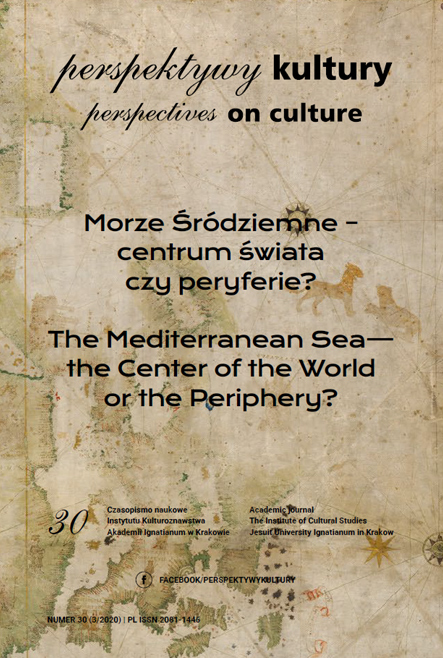Russian Pilgrims of the 12th–18th Centuries on “The sweet land of Cyprus”
Abstract
The era of the Crusades was also the era of pilgrims and pilgrimages to Jerusalem. The Russian Orthodox world did not accept the idea of the Crusades and did not consider the Western European crusaders to be pilgrims. However, Russian people also sought to make pilgrimages, the purpose of which they saw in personal repentance and worship of the Lord. Visiting the Christian relics of Cyprus was desirable for pilgrims on their way to Jerusalem. Based on the method of content analysis of a whole complex of the writings of Russian pilgrims, as well as the works of Cypriot, Byzantine, Arab and Russian chroniclers, the author explores the history of travels and pilgrimages of Russian people to Cyprus in the 12th–18th centuries, the origins of the Russian-Cypriot religious, inter-cultural and political relationships, in addition to the dynamics of their development from the first contacts in the Middle Ages to the establishment of permanent diplomatic and political relations between the two countries in the Early Modern Age. Starting with the 17th century, Russian-Cypriot relationships were developing in three fields: 1) Russians in Cyprus; 2) Cypriots in Russia; 3) knowledge of Cyprus and interest in Cyprus in Russia. Cypriots appeared in Russia (at the court of the Russian tsars) at the beginning of the 17th century. We know of constant correspondence and the exchange of embassies between the Russian tsars and the hierarchs of the Cypriot Orthodox Church that took place in the 17th–18th centuries. The presence of Cypriots in Russia, the acquisition of information, the study of Cypriot literature, and translations of some Cypriot writings into Russian all promoted interactions on both political and cultural levels. This article emphasizes the important historical, cultural, diplomatic and political functions of the pilgrimages.
References
Belobrova, O.A. (1979). Kiprskij tsikl v drevnerusskoj literature [A Cypriot Cycle in the Ancient Russian Literature]. Moscow: Science.
Bliznyuk, S.V. (1994). Mir torgovli i politiki v korolevstve krestonostsev na Kipre [The World of Trade and Policy in the Crusaders’ Kingdom in Cyprus]. Moscow: Moscow University Press.
Bliznyuk, S. V. (1998). “La dolce vita” dei Genovesi a Cipro nel XV sec. In G. Airaldi (Ed.), Le vie del Mediterraneo: idee, uomini, oggetti (secoli XI– XVI)[The Mediterranean Ways: Ideas, People, Objects] (No. 1, pp. 117–126). Genova.
Bliznyuk, S. (2006). L’idea delle crociate e la conquista nel pensiero russo. In G. Ortalli, G. Ravegnani, & P. Schreiner (Eds.), Quatra Crociata. Venezia – Bizanzio – Impero Latino [The Fourth Crusade. Venice – Byzantium – Latin Empire] (pp. 653–662). Venezia: Ist. Veneto di Scienze.
Bliznyuk, S.V. (2010). Krestovyje pohody v drevnerusskoi literature: Kipr na puti ot Konstantinopolia k Ierusalimu [The Crusades in the Ancient Rus¬sian Literature: Cyprus on the Way from Constantinople to Jerusalem]. Rossijskij istoricheskij zhurnal “Rodina”, 74–80.
Bliznyuk, S.V. (2014). Koroli Kipra v epohu krestovyh pohodov [The Kings of Cyprus in the Epoch of the Crusades]. St. Petersburg: Aleteja.
Bliznyuk, S.V. (2016). Korolevstvo Kipr i ital’ianskie morskie respubliki v XIII– XV vv. [The Kingdom of Cyprus and the Italian Maritime Republics from the Thirteenth to the Fifteenth Century]. Moscow: Academia.
Bliznyuk, S.V. (2017). Krestonostsy i ich dejanija v Konstantinopole i Sviatoj zemle v drevnerusskoj literature [The Crusaders and their Deeds in Con¬stantinople and in the Holy Land in the Ancient Russian Literature]. In T.V. Nikitina (Ed.), Istorija Gretsii v MGU im. M. V. Lomonosova [A His¬tory of Greece in the Moscow Lomonosov State University] (pp. 137–162). Moscow: Izdatelstvo istoricheskogo fakulteta Moskovskogo universiteta.
Chentsova, V. G. (1997). O prichinakh puteshestvija russkogo palomnika XV v. Zosimy na Khristianskij Vostok [On the reasons of Travel of a Rus¬sian Pilgrim Zosima to the Christian Orient]. In Inostrantsy v Vizan-tii. Vizantijtsy za rubezhami svojego otechestva [Foreigners in Byzamtium. Byzantines in Abroad] (pp. 52–54). Moscow: Indrik.
Coureas, N. (1997) The Latin Church in Cyprus, 1195–1312. Aldershot-Brook¬field, Vermont.
Maleto, E.I. (2005). Antologija khozhenij russkih puteshestvennikov XII–XV vv. [An Anthology of the Pilgrimages of the Russian Travelers in the 12–15th centuries]. Moscow: Science.
Puchner, W. (2006). The Crusader Kingdom of Cyprus – a Theatre Province of Medieval Europe? Athens: Academy of Athens.
Richard, J. (1977). Une économie coloniale? Chypre et ses ressources agricoles au Moyen Âge. In Byzantinische Forschungen V (pp. 331–352).
Schabel, Ch. & Nicolau-Konnari, A. (Eds.) (2005). Cyprus: Society and Culture 1191–1374. Leiden, Boston: Brill.
Schreiner, P. (2013). Byzanz und die Mamluken in der 2. Hälfte des 14. Jah¬rhundertes. In A. Simon, & Ch. Spinei (Eds.), Orbis Byzantinus. Byzanz und seine Nachbarn (pp. 363–369). Bucareşti; Brăila: Academiei Române.
Wartburg, M-L. (2000). Cane Sugar Production Sites in Cyprus. Real and Imagined. In Report of the Department of Antiquities, Cyprus 2000 (pp. 381–401).
Copyright (c) 2020 Jesuit University Ignatianum in Krakow

This work is licensed under a Creative Commons Attribution-NoDerivatives 4.0 International License.
Autor, zgłaszając swój artykuł, wyraża zgodę na korzystanie przez Wydawnictwo Uniwersystet Ignatianum z utworu na następujących polach eksploatacji:
- utrwalania utworu w formie papierowej, a także na nośniku cyfrowym lub magnetycznym;
- zwielokrotnienia utworu dowolną techniką, bez ograniczenia ilości wydań i liczby egzemplarzy;
- rozpowszechniania utworu i jego zwielokrotnionych egzemplarzy na jakimkolwiek nośniku, w tym wprowadzenia do obrotu, sprzedaży, użyczenia, najmu;
- wprowadzenia utworu do pamięci komputera;
- rozpowszechniania utworu w sieciach informatycznych, w tym w sieci Internet;
- publicznego wykonania, wystawienia, wyświetlenia, odtworzenia oraz nadawania i reemitowania, a także publicznego udostępniania utworu w taki sposób, aby każdy mógł mieć do niego dostęp w miejscu i czasie przez siebie wybranym.
Wydawca zobowiązuje się szanować osobiste prawa autorskie do utworu.





